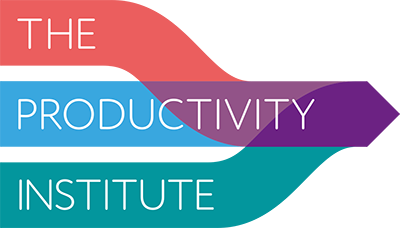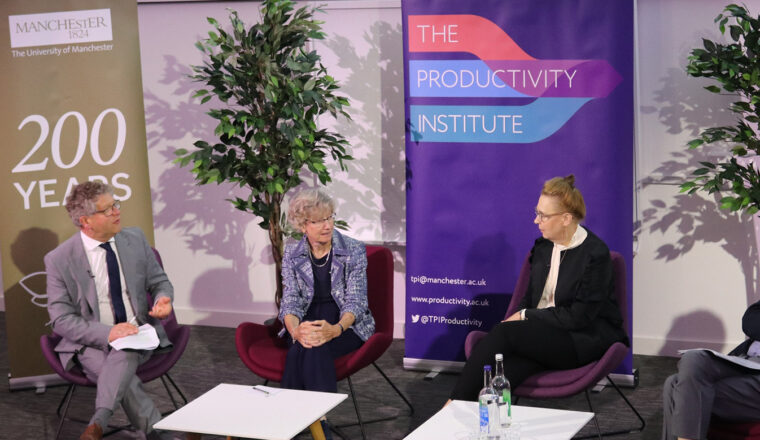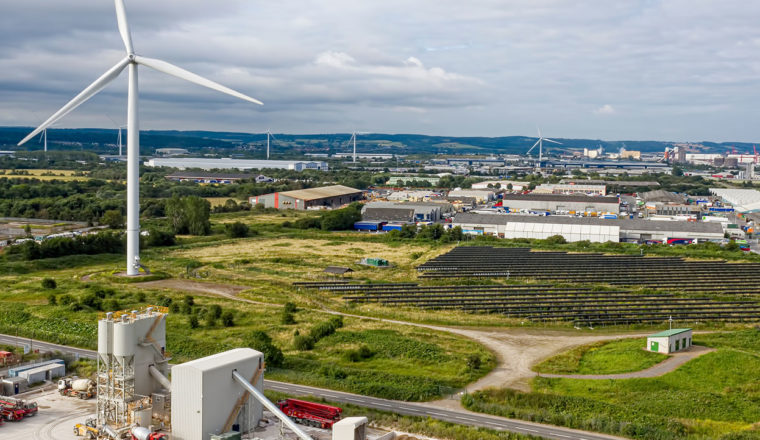The links between innovation, research and development, and productivity
What is R&D?
Research and development (R&D) encompasses basic research, applied research, and experimental development. It’s easy to think of it as a linear model – that the R&D that results in a new product or process proceeds in a single direction, from basic research, through applied research, to the development of a marketable product.
But this presents a challenge, says Richard Jones in his chapter of The Productivity Agenda, as it is not an accurate representation of technological development. Yet the linear model influences discussions on research and innovation policy. For instance, Technology Readiness Levels – an approach to assessing technologies and their readiness for on-site deployment – are used in policy discussions to determine funding eligibility.
What is innovation?
Innovation is a topic with a lot of variation, says Dirk Pilat on our podcast Productivity Puzzles with host Bart van Ark. Some people just mean invention – discovering something new, whether it’s a new tool or a new technology. But a broader definition of innovation also covers how these ideas, tools and technologies are developed in the market and how innovation is diffused through the economy.
What’s the difference between research and innovation?
As one old saying has it: “Research is turning money into ideas, but innovation is turning ideas into money”. In the context of the productivity puzzle, it’s crucial to examine whether the UK’s R&D landscape is effectively designed to achieve both these outcomes. Innovation, which builds upon research, generates more economic value by enhancing existing processes or creating new goods and services to meet market demands. The R&D process involves various activities, such as deploying new technologies, improving existing ones, and combining technologies in novel ways. These activities are carried out in different institutions with diverse goals and incentive structures.
The evolution of R&D in the UK
In recent years, the UK has witnessed a pronounced disinvestment in R&D, marking a departure from its historical standing as one of the world’s most R&D-intensive countries.
Back in 1981, the UK proudly stood as one of the most R&D-intensive countries globally, alongside the USA and Germany. However, a significant shift occurred between 1980 and 1995, leading to a notable decline in R&D intensity. The low point for UK business R&D intensity was reached in 2005.
How the UK ranks globally on innovation
The Global Innovation Index (GII) ranks world economies according to their innovation capabilities. The UK ranked 4th among the 132 economies featured in the GII 2023. Despite the UK’s strong performance in the GII, translating this into improved productivity remains a puzzle.
How can we restore the broken link between productivity and innovation? Sacha Wunsch-Vincent, Co-Editor of the Global Innovation Index talks about this in another episode of Productivity Puzzles. He says that two distinct innovation waves emerge as potential solutions.
The first, termed the digital age innovation wave, goes beyond the deployment of information and communication technology (ICT) infrastructure over the past few decades. This wave envisions more advanced applications of ICT capabilities, permeating not only research but also the entire economy, with a focus on integrating new big data and artificial intelligence uses.
The second wave, more conceptually challenging but promising, is the deep science wave, encompassing nanotechnology, biotechnology, and other profound scientific fields. Despite the plethora of breakthroughs in these areas over the last few decades, tangible innovations impacting productivity have been elusive. The convergence of the digital age and deep science waves, particularly in data-related aspects, presents a noteworthy trend that demands close attention and measurement.
What should we focus on in the future?
Richard Jones offers some key takeaways from his chapter of The Productivity Agenda:
- The UK has experienced a long period of disinvestment in R&D, in both state and private sectors. But in rebuilding the innovation economy there needs to be as much focus on translation and innovation diffusion as on discovery.
- The national R&D landscape needs to respond to national challenges such as the transition to Net Zero and stresses in the health and social care system.
- The innovation ecosystems in economically lagging regions need to be rebuilt, strengthening institutions for R&D and innovation diffusion. Compared to other countries, the UK lacks thriving innovation ecosystems in specific regions. To address this, policies should integrate science, innovation, and growth, fostering collaboration between public and private sectors. Vocational training, improved management skills, and enhanced access to finance are key components for promoting innovation and productivity.
Find out more
- Read Productivity, Innovation and R&D by Richard Jones in The Productivity Agenda.
- Listen to Productivity Puzzles: Science, Technology, Innovation and Pro-Productivity Policies, featuring Dirk Pilat from The Productivity Institute.
- Listen to Productivity Puzzles: Why does the UK do so well on the Global Innovation Index? featuring Sacha Wunsch-Vincent from the Global Innovation Index and Anna Valero from The London School of Economics and Political Science.




